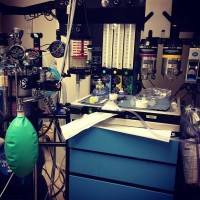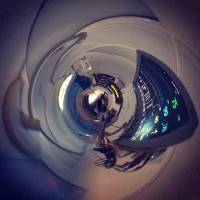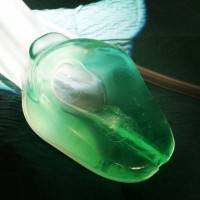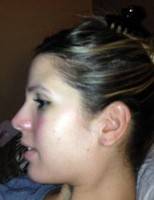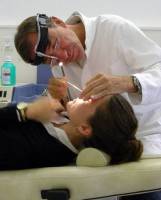Nose Job Under Local Anesthesia
Anesthesia for nose job
The type of anesthesia used varies from surgeon to surgeon. Some surgeons prefer to use intravenous sedation while others prefer general anesthesia.
In my experience, most patients do better having general anesthesia. This protects your airway and ensures that you are comfortable during the surgery. (Gregory Pippin, MD, Metairie Facial Plastic Surgeon)
Nose job anesthesia
The decision for they type of anesthesia to be used in nose job can depend on patient and surgeon preference. I prefer to do nose job under general anesthesia.
I believe that the patient is safest and most comfortable with this modality. It allows me to be a perfectionist and not worry about when the anesthesia will wear off. If I were to have a nose job, I would want to be under general anesthetic. (Dustin L. Reid, MD, Austin Plastic Surgeon)
There are three key factors to determine which level of anesthesia may be appropriate for Rhinoplasty Surgery. First is the patients overall medical condition and experience with procedures.
Second is the to determine if the nose job involves tip or pyramid work and if additional airway surgery on the turbinates is needed. Third is to consider the surgeon’s experience with all techniques. 60% of rhinoplasties in our practice are performed under intravenous sedation (twilight anesthesia), 30% are general anesthesia, and 10% are pure local anesthesia. (James Newman, MD, Bay Area Facial Plastic Surgeon)
Nasal surgery and anesthesia
We have successfully used different types of anesthesia over the past 25 years. For a full nose job our preferred type of anesthesia is a monitored deep IV sedation, usually with Diprovan and Versed. This is administered by a very experienced anesthesiologist using incremental doses of medication. Our patients experience a deep sleep. I believe that anesthesia actually begins the evening before surgery at home with our patients taking Valium that we prescribe and then taking one or two Valium tablets with a sip of water for their “breakfast” before leaving home on the morning of surgery. When they arrive at the hospital or out – patient surgical facility, they already are relaxed. Additional Valium by mouth increases their relaxation level even more so by the time they enter the O.R. we require less I.V. anesthetic. But general anesthesia can also be safely utilized for nasal surgery. Our goal is safety and comfort regardless of whether deep sedation or general anesthesia is used. (Donn R. Chatham, MD, Louisville Facial Plastic Surgeon)
Local, twilight or full general anesthetic
There are three choices. Local is possible, but you will hear everything and feel somethings. not really pain but pressure. Twilight is local supplemented with light sedation. this is better but carries more risk. Full general anesthetic is probably the best. Its safer and you feel and hear nothing. Nowadays a full anesthetic recovery is a matter of hours instead of days, as it was in the past. (Oakley Smith, MD, Toronto Facial Plastic Surgeon)
Nose job Anesthesia
Twilight anesthesia with local anesthesia works very well for nose job surgery. Loose packing is placed in the back of the nose so that any drainage from the surgery will not go down your throat. (Randy J. Buckspan, MD, Austin Plastic Surgeon)
The surgery can be done either under sedation (MAC) or General Anesthesia (GA). I have done hundereds under both types. It really depends on who is providing the service. In some surgery centers the MAC is very well done in others it is either too deep or too light.
So I would advise you to discuss with your surgeon. Their preference is likely to reflect the success of their anesthesia colleaugeues. (Benjamin C. Marcus, MD, Madison Facial Plastic Surgeon)
Anesthesia Preference for nose job
I perform a majority of my nose job procedures and revision rhinoplasty procedures under a general anesthetic. Although many rhinoplasty surgeons perform the procedure under IV sedation, I feel more comfortable with my patients fully asleep.
This largely has to do with possible drainage from the nose into the back of the throat while you are lying on the operating table. If this occurs, some patients will start to cough as a reflex and, therefore, disrupt the flow of the operation. There is also a concern of patients aspirating the drainage while in this position.
This means that you can possibly have drainage going down into the lungs, which can cause a serious infection. Under a general anesthetic, these concerns are minimized. Yes, there are risks associated with the general anesthesia itself, but modern day techniques for delivering anesthesia are so refined now that the risk/benefit ratio is highly favorable. Plus, I only use board certified anesthesiologists, which, in my opinion, provides the safest environment for you to have the rhinoplasty procedure. (John M. Hilinski, MD, San Diego Facial Plastic Surgeon)
General Anesthesia for nose job
Due to the risk of bleeding in the nasal cavity during Nose job, I prefer to perform the majority of my Nose job cases under general anesthesia. This technique stabilizes the airway and helps prevent airway compromise. (Stephen Prendiville, MD, Fort Myers Facial Plastic Surgeon)
Deep Sedation Offers Best Anesthesia for nose job
As mentioned, rhinoplasty can be done with local anesthesia only, local with sedation, and general anesthesia (usually with local). In my opinion, deep sedation offers the best outcomes. A surgeon who performs proper local anesthesia will render your nose completely numb.
With a numb nose, IV sedation will result in you being 100% unconscious during the entire surgery. With IV sedation, post surgical nausea is almost unheard of. Beyond the obvious comfort factor, vomitting after surgery is not good for your nose.
With IV sedation there are no big tubes coming out of your mouth distorted the shape of your face and hindering access to your nose. Local anesthesia is an excellent choice for the rare person who is not bothered by the awareness of what is being done. I think I see about 1 in every 200 patients who choose that option. (Louis W. Apostolakis, MD, Austin Facial Plastic Surgeon)
General or local with IV sedation common for nose job
Nose job can be performed under general anesthetic or with various degrees of sedation. In all cases local anesthetic is used to constrict the blood vessels and prevent the sensation of pain during the surgery. There are pros and cons to each type of anesthesia, which you should discuss with your rhinoplasty surgeon. A nose job specialist usually uses various types of anesthesia depending on the specifics of the surgical procedure. (Thomas Buonassisi, MD, Vancouver Facial Plastic Surgeon)
Anesthesia for rhinoplasty
Rhinoplasty can be performed with sedation anesthesia or general anesthesia. Every patient and surgeon is different.
Ultimately, the choice depends on the surgeon you choose and what he feels comfortable with.
Both types are safe if done in the right enviroment and with board certified physicians. (Andres Bustillo, MD, FACS, Miami Facial Plastic Surgeon)
What type of anesthesia with Rhinoplasty
I only perform rhinoplasty procedures using a light general anesthesia; meaning the patient is completely asleep for the surgery.
It is the safest option for both the surgeon and the patient. I also only use board certified anesthesiologist for the safety of my patients. (Rod J. Rohrich, MD, Dallas Plastic Surgeon)
Best Anesthesia For Rhinoplasty- It Depends
A common question is what is the best option for anesthesia for rhinoplasty. Some of the factors which are important to consider are the following:
Type of rhinoplasty – Every nose is different and therefore the surgeon should vary his approach based on anatomy. A complex revision requiring rib harvest is best performed with general anesthesia, while a minor procedure such as a small dorsal edge or alar base resection can be performed under local anesthesia.
Surgeon experience – Some surgeons may have a positive experience with either IV sedation, local, or general anesthesia. Ideally, the choice of anesthesia will be dictated by the patient’s anatomy with the surgeon being comfortable with a variety of techniques if necessary.
Anesthesia experience – An experienced anesthesiologist will be able to perform a variety of techniques
Individual patient characteristics and preference – Some patients do not want to even see the inside of an operating room. Others do not like the idea of being “knocked out”. More anxious personalities will often be treated better with general anesthesia. Overall, general anesthesia has the distinct advantage of protecting the airway and is useful in cases which are longer than 2 hours.
IV sedation can be applicable for some patients in cases lasting less than 2 hours. Local anesthesia can be an option for patients with minimally invasive work needed and a calm disposition. (Anil R. Shah, MD, Chicago Facial Plastic Surgeon)
There is a wide variety of anesthesia that can be used during an anesthesia. It can be done:
1. under local anesthesia rhinoplasty, while the patient is awake;
2. under general anesthesia, while the patient is asleep.
There are a many medications and ways to help patient breath during the procedure.
These questions are best answered by the anesthesiologist or nurse anesthetic that would be performing the anesthesia. (Babak Azizzadeh, MD, Beverly Hills Facial Plastic Surgeon)
Rhinoplasty may be done with either General Anesthesia or Sedation
Most surgeons perform rhinoplasty using general anesthesia; meaning the patient is completely asleep and a machine is controlilng his/ her breathing. Some surgeons perform rhinoplasty using IV sedation, meaning the patient is very sleepy, but breathing for themselves. Many patients ask if they may avoid general anesthesia because they are concerned about the safety and the possible side effects of a general anesthesia.
Interestingly, for young and healthy patients without heart or lung disease, general anesthesia can actually be less stressful and easier on your body than IV sedation. IV sedation requires keeping the patient titrated appropriately where they are relaxed and sedated, but not too sedated so that they don’t stop breathing.
This can sometimes be challenging as patients may become disoriented during the procedure or complain of pain during the surgery. In summary, most surgeons prefer general anesthesia and it is probably more comfortable for the patients. For more info on Rhinoplasty, please click the link below. (David Mabrie, MD, Bay Area Facial Plastic Surgeon)
